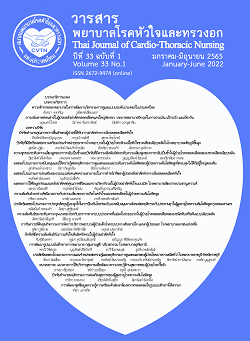Prevalence and factors relating to the utilization of health products among students in a secondary school in Phuwiang district, Khon Kaen province
Keywords:
utilization of health care products, students in a secondary school, relating factorsAbstract
The utilization of unsafe health products can cause damage to people’s health in all ages. The understanding of the situations can prevent inappropriate consumption behavior. The main objective of this research was to investigate the prevalence and factors relating to the utilization of health products among students in a secondary school in Phuwiang District, Khon Kaen Province. The research employed descriptive research approach, based upon questionnaires from 236 students. The data were analyzed by using quantitative measures, including percentage, mean, standard deviation, 95% confidence interval and multivariable logistic regression analysis.
Research’s results illustrated that the average age of the students was 16.1 years old (standard deviation 1.0) and 39.8% of the students were currently at grade 4. Moreover, 49.6% of the participant students (95%CI: 43.0 – 56.1) had inappropriate consumption behavior concerning heath care products. 50% of the students (95%CI: 43.4 – 56.6) had moderate attitude towards the utilization of health care products. In addition, 94.1% of the students (95%CI: 90.3–96.7) had low understanding of the health products. After adjusted with confounders, the result from multivariable logistic regression showed that age and convenience in purchasing the health products are associated with the unsuitable behavior of health product used and was statistically significant (p<0.001, 0.019 respectively).
This research showed that the instruction and understanding provision of appropriate attitude and behavior were immensely necessary for secondary school students. The study also suggested that there should be further activities organized in order to improve students’ consumption behavior concerning with health care products.
References
Phumart P, Phodha T, Thamlikitkul V, Riewpaiboon A, Prakongsai P, Limwattananon S. Health and economic impacts of antimicrobial resistant infections in Thailand: a preliminary study. Journal of Health Systems Research. 2012 Sep;6(3):352–60. (in Thai).
Prakaimuntrakul W. Prevalence of and factors associated with self medication amongs population of Ubonrattana Districts, Khon Kaen Province. [Independent Study Report for the Master of Pharmacy in Pharmacy Management]. Khon Kaen: Khon Kaen University; 2010. (in Thai).
Sommart J, Auiwattanakul P. Factors associated with antibiotic use among senior high school students in Khon Kaen. International Journal of Plant Sciences. 2016; 12(1): 25-33. (in Thai).
Sumpradit N, Hunnangkul S, Phumart P, Prakongsai P. A survey of the antibiotic control and surveillance system and measures in promoting rational use of antibiotics: Preliminary results. Journal of Health Systems Research. 2012 Sep;6(3):361–73. (in Thai).
Kaladee A. Factors related to polypharmacy consumption behavior among people in Tambon Naphai, Muang District, Chaiyaphum: multivariable analysis. Thai Food and Drug Journal. 2014;21(2): 50–8. (in Thai).
Gebeyehu E, Bantie L, Azage M. Inappropriate use of antibiotics and its associated factors among urban and rural communities of Bahir Dar city administration, Northwest Ethiopia. PLoS ONE. 2015;10(9): e0138179.
Awad AI, Aboud EA. Knowledge, attitude and practice towards antibiotic use among the public in Kuwait. PLoS ONE. 2015;10(2): e0117910.
Rachatanavin R. Prevalence of overt manifestation of steroid abuse without medical indication. [s.n.]; 2007. (in Thai).
System Development Group, Public and Consumer Affairs Division. Dietary supplements. Nonthaburi: Food and Drug Administration; 2007. (in Thai).
Singharannusorn C, Arunmuang A. Dietary supple-ment product consumption of secondary school students under supervision region 2 of Ministry of Public Health. Thai Food and Drug Journal. 2013;20(1):38–47. (in Thai).
Food and Drug Administration, Ministry of Public Health. 4 decades of Food and Drug Administration. Nonthaburi: Food and Drug Administration; 2010. (in Thai).
Singharannusorn C. Knowleadge and Behavior on health product consumption of the secondary level student of Chinatpittayakom school, Chainat province. Thai Food and Drug Journal. 2012;19(1):25–34. (in Thai).
Tongsukdee S, Worapani T. The study of knowledge, attitude and behavior about health product consumption and selection of OR YOR Noi students in Aor Yor Noi School, Sukhothai Province. Thai Food and Drug Journal. 2017;24(3):28–37. (in Thai).
DiClemente RJ, Salazar LF, Crosby RA. Health behavior theory for public health: principles, foundations, and applications. Second Edition. Burlington, Massachusetts: Jones & Bartlett Learning; 2019. p.322.
Bloom BS. Ed. Handbook on formative and summative of student learning. New York: McGraw-Hili. Inc.;1971.
Hosmer DW, Lemeshow, S. Applied logistic regression. 2nd ed. New York: John Wiley &Sons; 2000.
Downloads
Published
How to Cite
Issue
Section
License
Copyright (c) 2022 Thai Journal of Cardio-Thoracic Nursing

This work is licensed under a Creative Commons Attribution-NonCommercial-NoDerivatives 4.0 International License.
บทความนี้ยังไม่เคยตีพิมพ์หรืออยู่ในระหว่างส่งไปตีพิมพ์ในวารสารอื่น ๆ มาก่อน และกองบรรณาธิการขอสงวนสิทธิ์ในการตรวจทาน และแก้ไขต้นฉบับตามเกณฑ์ของวารสาร ในกรณีที่เรื่องของท่านได้ได้รับการตีพิมพ์ในวารสารฉบับนี้ถือว่าเป็น ลิขสิทธิ์ของวารสารพยาบาลโรคหัวใจและทรวงอก






